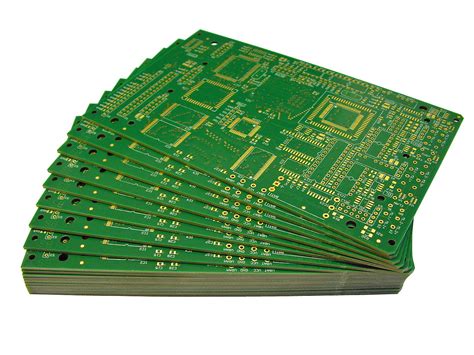Understanding PCB cost Factors
The cost of manufacturing a printed circuit board (PCB) can vary significantly depending on several key factors. To accurately estimate the PCB cost, it is essential to consider the following aspects:
Board Size and Complexity
The size and complexity of the PCB design play a crucial role in determining the overall cost. Larger boards with more layers and intricate designs require more materials and processing time, resulting in higher costs. Some key factors related to board size and complexity include:
- Board dimensions (length, width, and thickness)
- Number of layers
- Copper weight and thickness
- Minimum trace width and spacing
- Hole sizes and density
Material Selection
The choice of materials used in PCB fabrication also impacts the cost. The most common PCB substrate material is FR-4, a glass-reinforced epoxy laminate. However, specialized applications may require more expensive materials, such as:
- High-frequency laminates (e.g., Rogers, Isola)
- Flexible or rigid-flex substrates
- Metal-core PCBs for enhanced thermal management
- Halogen-free or low-loss materials
Surface Finish
The surface finish applied to the PCB’s exposed copper traces and pads affects both the cost and the board’s performance. Some popular surface finishes include:
| Surface Finish | Relative Cost | Advantages |
|---|---|---|
| HASL (Hot Air Solder Leveling) | Low | Good solderability, low cost |
| ENIG (Electroless Nickel Immersion Gold) | Medium | Flat surface, excellent shelf life |
| OSP (Organic Solderability Preservative) | Low | Eco-friendly, low cost |
| Immersion Silver | Low to Medium | Good solderability, low cost |
| Hard Gold | High | Excellent wear resistance, corrosion resistance |
Quantity and Turn-Time
The number of PCBs ordered and the required turn-time significantly influence the cost per board. Higher quantities often result in lower per-unit costs due to economies of scale. Faster turn-times may incur additional charges for expedited processing.
PCB Cost Breakdown
To provide a rough estimate of PCB cost, consider the following breakdown for a typical 2-layer, 100 x 100 mm board:
| Cost Factor | Estimated Cost Range |
|---|---|
| PCB Fabrication | $10 – $50 |
| Components and Assembly | $20 – $100 |
| Design and Engineering | $50 – $200 |
| Testing and Quality Control | $10 – $50 |
| Shipping and Handling | $5 – $20 |
| Total Estimated Cost | $95 – $420 |
Please note that these figures are rough estimates and can vary significantly based on the specific requirements of your project.
Ways to Reduce PCB Cost
To minimize the cost of PCB manufacturing, consider the following strategies:
- Optimize board size and layout to minimize material usage
- Use standard materials and surface finishes when possible
- Increase order quantity to take advantage of volume discounts
- Allow for longer turn-times to avoid expedited processing fees
- Work with experienced PCB design engineers to identify cost-saving opportunities

Choosing a PCB Manufacturer
When selecting a PCB manufacturer, it is essential to consider factors beyond just the price. Look for a reputable manufacturer that offers:
- High-quality fabrication and assembly services
- Excellent customer support and communication
- Competitive pricing and transparent cost breakdowns
- Quick turn-times and reliable delivery
- Certifications and compliance with relevant industry standards (e.g., ISO, UL, RoHS)
Frequently Asked Questions (FAQ)
1. What is the minimum cost for a simple PCB prototype?
For a basic 2-layer PCB prototype, the minimum cost can range from $50 to $200, depending on the board size, complexity, and the PCB manufacturer’s minimum order requirements.
2. How does the number of layers affect PCB cost?
Increasing the number of layers in a PCB design generally leads to higher costs due to the additional materials and processing steps required. The cost increase is not always linear, as the complexity of the multilayer stack-up and the manufacturer’s capabilities also play a role.
3. Can I save money by using cheaper PCB materials?
While using cheaper materials may reduce the initial PCB cost, it is essential to consider the long-term performance and reliability of the board. Cheaper materials may have lower quality, reduced durability, or inferior electrical properties, which can lead to product failures and increased costs in the long run.
4. How much does PCB assembly cost?
PCB assembly costs depend on factors such as the number and type of components, the complexity of the assembly process, and the chosen assembly method (e.g., through-hole, surface-mount, or mixed). Assembly costs can range from a few dollars to hundreds of dollars per board, depending on these factors and the quantity ordered.
5. Are there any hidden costs I should be aware of when ordering PCBs?
Some PCB manufacturers may have hidden costs or fees that are not immediately apparent, such as:
- Tooling or setup charges for custom designs
- Expedited processing fees for quick turn-times
- Minimum order quantities (MOQs) that require a higher upfront investment
- Shipping and handling charges, especially for international orders
To avoid unexpected costs, thoroughly review the PCB manufacturer’s pricing structure and ask for a detailed quote that includes all applicable fees.
Conclusion
Estimating the cost of manufacturing a PCB requires careful consideration of various factors, including board size, complexity, materials, surface finish, quantity, and turn-time. By understanding these cost drivers and working with a reputable PCB manufacturer, you can optimize your design and minimize expenses while ensuring the quality and reliability of your final product. Remember to take into account not only the initial PCB fabrication costs but also the long-term performance and total cost of ownership when making decisions about your PCB design and manufacturing process.

No responses yet